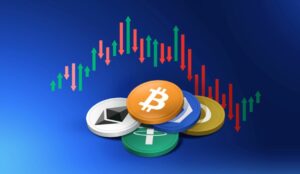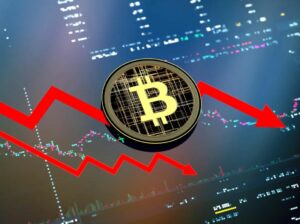
Navigating the world of cryptocurrency can feel like learning a new language, especially on platforms like Bitstamp or Kraken. Whether you’re a newbie or a seasoned trader, understanding the terminology is your first step to mastering crypto exchanges. At CryptoExlist, we’re breaking down the essential terms you’ll encounter on Bitstamp, one of the oldest and most trusted platforms, to help you trade with confidence and clarity. Let’s dive into this exciting crypto glossary!
Understanding Cryptocurrency Terminology: Why It Matters on Bitstamp
Cryptocurrency exchanges like Bitstamp and Kraken are bustling hubs where digital assets change hands, but they come with their own set of jargon that can confuse even the savviest investors. Knowing these terms isn’t just about sounding smart—it’s about making informed decisions that could impact your wallet. Bitstamp, founded in 2011, has long been a go-to platform for buying, selling, and trading cryptocurrencies like Bitcoin (BTC) and Ethereum (ETH). Meanwhile, Kraken, another industry giant, shares a similar reputation for reliability. But no matter which platform you choose, the terminology remains a universal key to unlocking their potential. In this guide, we’ll focus on Bitstamp’s ecosystem, shedding light on the words and phrases you’ll see as you explore its features. From “order books” to “fiat pairs,” we’ve got you covered with explanations that are easy to grasp and apply.
So why does this matter? Imagine logging into Bitstamp for the first time and seeing terms like “liquidity” or “market order” without a clue about their meaning. You might hesitate to place a trade or, worse, make a costly mistake. By mastering these terms, you’re not just learning a glossary—you’re gaining the power to navigate Bitstamp like a pro. Let’s break it down step by step, starting with the basics and moving into more advanced concepts you’ll encounter on this platform.

Key Cryptocurrency Terms on Bitstamp You Should Know
Every exchange has its quirks, and Bitstamp is no exception. To help you get started, we’ve categorized the most common terms into digestible sections. Below, you’ll find explanations tailored to Bitstamp’s interface and functionality, with a nod to how they compare to platforms like Kraken. Let’s explore these terms and see how they shape your trading experience.
What Is a Market Order? Trading Made Simple
When you log into Bitstamp and decide to buy Bitcoin, you’ll likely encounter the term “market order.” This is one of the simplest ways to trade on the platform. A market order tells Bitstamp to execute your trade immediately at the current market price. For example, if BTC is trading at $60,000 and you place a market order, you’ll get it at that price—or as close as possible, depending on availability. It’s fast and straightforward, perfect for beginners who want to jump in without overthinking. On Kraken, market orders work similarly, but Bitstamp’s clean interface makes it especially beginner-friendly. Just be aware that prices can shift slightly due to market fluctuations, so timing is key.
Limit Orders: Taking Control of Your Trades
Next up is the “limit order,” a term you’ll see right beside market orders on Bitstamp’s trading dashboard. Unlike a market order, a limit order lets you set a specific price at which you want to buy or sell. Say you think Ethereum will drop to $4,000—you can place a limit order at that price, and Bitstamp will only execute the trade if the market hits your target. It’s a powerful tool for strategic traders who want precision. Kraken offers this feature too, but Bitstamp’s low fees and clear order book make it a favorite for limit order enthusiasts. The catch? Your trade won’t go through if the price never reaches your limit, so patience is required.
Order Book: Decoding the Market’s Pulse
Ever wondered how Bitstamp determines prices? That’s where the “order book” comes in. This is a real-time list of buy and sell orders on the platform, showing what traders are willing to pay or accept for a cryptocurrency. On Bitstamp, the order book is your window into market depth—how much BTC or XRP is available at different price levels. A thick order book signals high liquidity, meaning trades happen smoothly without wild price swings. Kraken’s order book is just as robust, but Bitstamp’s transparency has earned it trust among users since its early days. Checking the order book can help you spot trends and decide whether it’s a good time to trade.

Fiat Pairs and Crypto Pairs: Bridging Two Worlds
Bitstamp stands out for its support of “fiat pairs” and “crypto pairs,” terms that define how assets are traded. A fiat pair involves swapping a cryptocurrency like Bitcoin for a traditional currency, such as USD or EUR (e.g., BTC/USD). Crypto pairs, on the other hand, let you trade one cryptocurrency for another, like BTC/ETH. Bitstamp’s fiat gateway is a big draw for users entering crypto from traditional banking, while its crypto pairs cater to seasoned traders diversifying their portfolios. Kraken also excels in fiat support, but Bitstamp’s streamlined process makes these terms easy to grasp and use. Knowing the difference helps you pick the right trading pair for your goals.
Advanced Bitstamp Terminology for Savvy Traders
Ready to level up? Bitstamp offers more than just the basics, and its advanced features come with their own vocabulary. Here’s where things get interesting for traders looking to dig deeper into the platform’s capabilities.

Liquidity: The Lifeblood of Trading
“Liquidity” is a term you’ll hear often on Bitstamp, and it’s a big deal. It refers to how easily you can buy or sell an asset without causing a massive price change. High liquidity means there are plenty of buyers and sellers, so your trades execute quickly at stable prices. Bitstamp’s strong liquidity, especially for popular coins like Bitcoin and Ripple (XRP), is one reason it’s a top choice over competitors like Kraken in certain markets. Low liquidity, though rare on Bitstamp, can lead to slippage—when your trade price differs from what you expected. Understanding liquidity helps you gauge how smoothly your trades will go.
Slippage: The Hidden Cost of Volatility
Speaking of slippage, this term pops up when markets get choppy. On Bitstamp, slippage happens when your trade executes at a different price than you intended, usually during sudden price swings. For instance, if you place a market order for BTC at $60,000 but it jumps to $60,200 before the trade completes, that’s slippage. Bitstamp’s high liquidity minimizes this risk, but it’s still something to watch during volatile periods. Kraken users face similar challenges, but Bitstamp’s focus on stability often keeps slippage in check. Timing your trades can reduce its impact.
KYC: Your Ticket to Trading
Before you can trade on Bitstamp, you’ll need to complete “KYC” (Know Your Customer). This is a verification process where you submit ID and personal details to comply with regulations. It’s standard across exchanges like Kraken too, ensuring the platform stays secure and legitimate. On Bitstamp, KYC is quick and user-friendly, unlocking full access to deposits, withdrawals, and trading. While it might feel like a hurdle, it’s a small price for the trust and safety Bitstamp provides. Get it done early to avoid delays!

Conclusion: Master Bitstamp’s Terms with CryptoExlist
Cryptocurrency trading on Bitstamp doesn’t have to be a mystery. From market orders to KYC, understanding these terms transforms you from a confused beginner to a confident trader. Bitstamp’s long-standing reputation, paired with its intuitive design, makes it an ideal place to apply this knowledge—whether you’re eyeing fiat pairs or diving into the order book. Compared to Kraken, Bitstamp offers a unique blend of simplicity and depth that appeals to all levels of traders. At CryptoExlist, we’re here to guide you through every step of your crypto journey, breaking down complex ideas into actionable insights. So, log into Bitstamp, explore its features, and let CryptoExlist be your trusted companion in mastering the crypto world!























